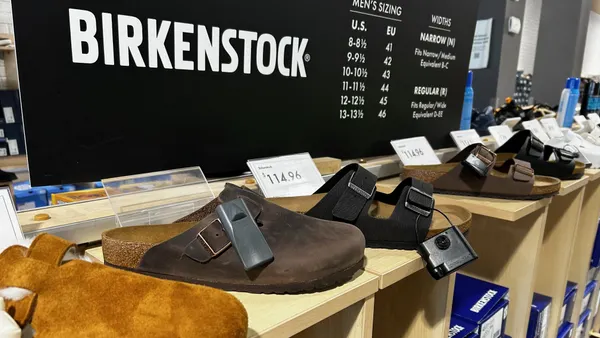Dive Brief:
-
Amazon had a year-over-year growth rate of 38% in housewares, health & personal care and beauty sales, which far exceeds the growth average of 6% in those categories for the total U.S. domestic market, according to a report from e-commerce data measurement firm One Click Retail.
-
Amazon's growth rate in housewares sales alone is three and a half times that of the total U.S. domestic market. The category was a main driver of Amazon’s success last year, accounting for 15% of its year-over-year sales growth. The category delivered $7 billion in sales for Amazon last year, compared to more than $5 billion in 2015.
-
Amazon's health and personal care sales are growing close to five times faster year over year than the total domestic market, with a 40% increase in nutrition and wellness, a 30% increase in baby care, a 55% increase in household consumables and a 45% growth in health care. While the U.S. total retail market growth of beauty and cosmetics was 2%, Amazon sales in the category rose 47%, driven by skincare, men’s products and smaller items.
Dive Insight:
Amazon’s share grab in household products shows how consumers, especially Prime members, are content to stock and re-stock their pantries and bathrooms with commodities.
"What we're currently witnessing is e-commerce finally beginning to disrupt everyday household products, with Amazon leading the pack," One Click Retail CEO Spencer Millerberg said in a statement. "Consumers benefit from buying these items in bulk, and having them delivered right to their doorsteps. Our numbers continue to demonstrate just how significant these everyday items are in helping to drive Amazon's exponential YoY growth.”
The key for offline competitors is to focus on specialty retail, differentiated merchandise and their store experience, taking advantage of consumers’ desire to touch and feel products. When it comes to commodity goods, shoppers also make choices based on price, which can be a margin killer that deep-pocketed Amazon is more able to withstand.
But that's not to say that there aren't online opportunities for brick-and-mortar retailers. New research from market research firm GfK found that Prime members spent an average of 12.8 hours on online shopping-related activities over a five-month period studied last year (and not just on Amazon), compared to 7.2 hours spent by non-Prime members. More than three-fifths of Prime members also shop at mass retailers like Target and Wal-Mart, and a higher percentage of Prime members than non-Prime shoppers are members of warehouse clubs like Costco, according to the report.
Target has more overlap with Amazon in its customer base, according to Frank N. Magid Associates, Inc., making it especially important for it to differentiate its merchandise, improve its stores and increase the stickiness of its Cartwheel mobile app and REDcard loyalty programs. It has announced several initiatives to accomplish those goals in recently months. Wal-Mart and Jet, meanwhile, appear to be making a play for Amazon’s non-Prime customers, which GfK found also use Amazon as their most used shopping resource.
One Click Retail’s report is the kind of news that can derail retailers, notably Wal-Mart, which has been moving its focus to e-commerce in the months following its purchase of Jet last year, says Nick Egelanian, president of retail development consultants SiteWorks International. He says dollar stores and no-frills grocery stores Aldi and Lidl — all retailers that emphasize and are growing their physical store footprint — are taking market share from Wal-Mart.
The shiny object diverting Wal-Mart’s attention is Amazon, which, despite its growth, by Egelanian’s measure controls a small percentage of retail sales. “[Wal-Mart] is in a price war with Amazon for 1% of the market, and Amazon has a 20-year lead on them,” he told Retail Dive.














